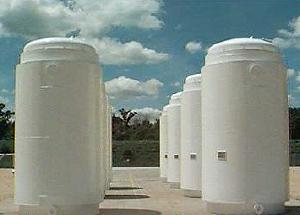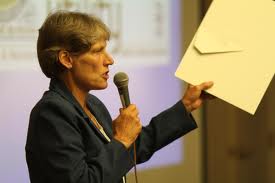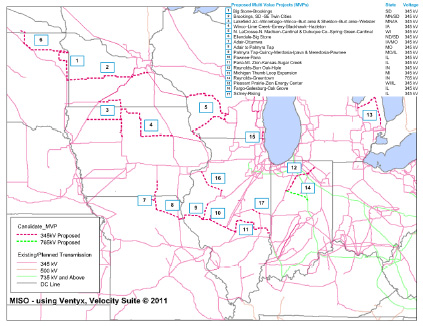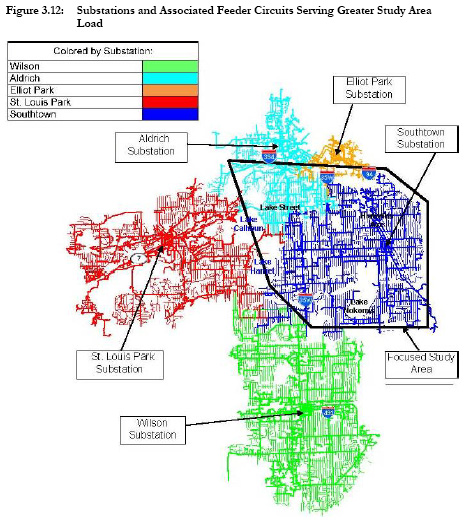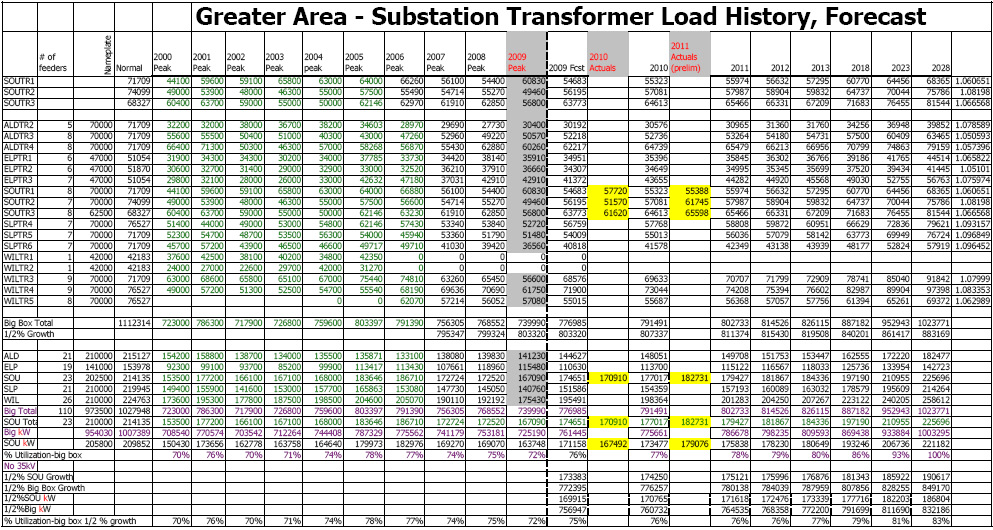Nuclear Waste in Minnesota Granite!
December 27th, 2011
Thanks to a reporter (THANK YOU THANK YOU THANK YOU!!!), I’ve got the recently release Sandia report:
Granite Disposal of U.S. High-Level Radioactive Waste – Sandia National Laboratories
This was released in August 2011. It’s making the rounds now.
Here’s the part that really scares me, right there on the first page:
Unlike the safety analyses for disposal in salt, shale/clay, or deep boreholes, the safety analysis for a mined granite repository depends largely on waste package preservation. In crystalline rock, waste packages are preserved by the high mechanical stability of the excavations, the diffusive barrier of the buffer, and favorable chemical conditions. The buffer is preserved by low groundwater fluxes, favorable chemical conditions, backfill, and the rigid confines of the host rock. An added advantage of a mined granite repository is that waste packages would be fairly easy to retrieve, should retrievability be an important objective.
Yes, it’s on page one (do I even want to read past page one? NOOOOO). What’s scary about that? Well, back in “Nuclear Waste Daze” representing Florence Township, I learned more than I wanted to know about “waste package preservation,” specifically a lot about weld flaws, about loading “ignition events”because they hadn’t considered the impacts of zinc and boric acid:
On May 28, 1996, a hydrogen gas ignition occurred during the welding of the shield lid on a ventilated storage cask (VSC-24) multi-assembly sealed basket (MSB). The gas ignition displaced the shield lid (weighing about 2898 kilograms [6390 pounds]), leaving it in place but tipped at a slight angle, with one edge about 7.6 centimeters [3 inches] higher than normal.
The loaded VSC-24 multi-assembly transfer cask (MTC), a shielded lifting device used to transfer the MSB loaded with spent fuel to the ventilated concrete cask, had been placed in the cask decontamination work area in the auxiliary building. Approximately 114 liters [30 gallons] of borated spent fuel pool water had been drained from the MSB to facilitate welding of the shield lid, creating an air space below the lid. The hydrogen gas ignition occurred during the initiation of the shield lid welding, approximately 11 hours after the loaded MTC had been removed from the spent fuel storage pool.
And then there’s the inability to unload a cask once it’s been loaded and used for storage for a while. for a Three Stooges HILARIOUS (if the truth wasn’t so scary) report on trying to unload a cask, “oops, an assembly is warped, oops, got stuck pulling out, oops, what to do, oops, let’s just ram it back in and put the cover on” at INEL:
The possibility of revival of the notion of storing nuclear waste in the Minnesota granite, and granite anywhere, is more than I want to think about.
Here’s a fun video with some shots that Northern States Power showed us back in the NSP sponsored “Task Force” prior to their application(we’re talking late 1994-early 1995 here), to show us how safe casks are:
Homer, you work at a nuclear plant – what do you think?
Tonight – Leslie Glustrom in Mpls on Xcel Franchise
December 14th, 2011
Colorado’s Leslie Glustrom, hot off the Boulder campaign to oust Xcel Energy from its Boulder electrical franchise (two birds with one stone, first, Xcel is out, and second, the PSC is out too!) will be featured in a conversation about municipalization of electric utilities – where a city takes over its own energy purchases and distribution, and yes, even generation too, to the extent possible!
TONIGHT!
Municipalization in Minneapolis?
Xcel’s Minneapolis Franchise
Energy Options for Minneapolis
Boulder Colorado’s Leslie Glustrom
Wednesday, December 14, 2011, 7:30 pm
UTEC Center – Room 102B
1313 5th St. SE
Dinkytown, Mpls
Boulder, Colorado, has long gotten its electric service from Xcel Energy. Now, Boulder seems well on the way towards kicking out Xcel and setting up a publicly-owned electric utility. Boulder voters have made the choice, and Xcel lost the municipalization referendum in which it reportedly spent over ten times as much as the “municipalization” advocates.
Boulders ratepayers decide to explore a world without Xcel or the PUC.
Minneapolis, Minnesota, has also long received its power from Xcel Energy, and the agreement between the city and Xcel expires on Dec 31, 2014. This is the time to explore options, as Boulder has done!
Leslie Glustrom, Research Director of Clean Energy Action, headquartered in Boulder, has been close to the municipalization issue in Boulder and is visiting Minnesota. Leslie is a nationally-prominent energy figure and so effective that the Colorado Public Utilities Commission has banned her from intervening in Xcel proceedings!
Come meet with Leslie and other interested citizens to learn more about possible alternatives for electrifying Minneapolis.
TONIGHT at 7:30 p.m.
Wednesday, December 14, 2011
UTEC Center – Room 102B
1313 5th St. SE
Dinkytown, Mpls
And MISO “approval” means exactly what?
December 9th, 2011
Here it is, MTEP 11, the Midwest Transmission Expansion Plan for 2011 (CLICK HERE, look on lower right), and it’s in the news too. The main report and some appendices:
MTEP 11 Appendix A-1_2_3 – Cost Allocation
Page listing all the Appendices
MTEP Appendix e52 Detailed Proposed MVP Portfolio Business Case
Please take note that this includes not only the CapX 2020 Brookings-Hampton line (#2 on map), but also the LaCrosse-Madison line (#5 on map), the one they need to build or they’ve got a lot of system instability goin’ on.
From my perspective, the most important thing to be aware of is that MTEP 11, and the MTEPs that preceded it, are about the shift to economic dispatch and development of the electric market. At the outset, MISO studied potential benefits of this shift, and found massive economic benefits, of which they speak in their press release. The economic benefits are realized by optimizing use of lower production cost generation, and in their own words, to “displace natural gas with coal.” Don’t believe it? Read this study that ICF did for MISO:
This is the worst possible result for those of us who breathe, and means that tens of thousands of landowners will have very high voltage transmission lines on their land, taken from them by eminent domain. These projects, almost all of the MTEP projects, are not about electric reliability, they’re “need” is to deliver market transactions of electric generation from any “point A” to any “point B,” and this is a private interest, a desire for market profits, and not a public interest.
Another issue looming is “what does MISO ‘approval’ mean?” Transmission lines are regulated by states, individually, and there is a movement to strip states of their regulatory authority and transfer that to federal entities. Look no further than Obama’s transmission “fast track” proposal, naming one of the CapX 2020 projects! States must make their energy regulatory decisions in an open, transparent process and based their decisions on ratepayer and public interest. That focus is not present in federal top-down edicts. States’ rights are at issue and we need to keep on our toes so this power shift doesn’t slide through.
And it’s not “just” the ICF report above, that’s it’s all about coal is clear from prior press. Here’s an important sentence, quoting GRE’s spin-guy Randy Fordice — explaining what we all know, that the MISO effort to get the “benefits” of displacing natural gas with coal:
Coal with benefits, yesiree… Gotta hand it to Fordice for being honest!
Hiawatha Project Comments due tomorrow
October 25th, 2011
 (above – Overland’s take on what’s really happening here, that Hiawatha is “B to C” of a much larger project, one that’s been in progress for years, check the upgrades at that 280 and East Hennepin substation, and at the Wilson sub at 494 and Nicollet, if you want some concrete and steel proof)
(above – Overland’s take on what’s really happening here, that Hiawatha is “B to C” of a much larger project, one that’s been in progress for years, check the upgrades at that 280 and East Hennepin substation, and at the Wilson sub at 494 and Nicollet, if you want some concrete and steel proof)
Comments are due tomorrow by 4:30 on Xcel Energy’s Hiawatha Project. Send to:
Beverly Jones Heydinger, ALJ
Office of Administrative Hearings
P.O. Box 64620
St. Paul, MN 55164-0620
or email:
beverly.heydinger@state.mn.us
Some documents you might want to check out are:
For an even better showing of substations and which serve what area, where you can see that the Southtown Sub stretches to the southwest beyond the study zone, and that Aldrich serves a significant part of the study zone, and St. Louis Park a little bit. Check the Application, Appendix A, p. 24 of 102 (click for larger version):
And be sure to take a look at the Zima Schedule 2 and 3, I particularly like Sched. 3, that shows that there is a lot of wiggle room there for the transformers, look at Aldrich, even Elliot Park with the smaller transformers. Here’s Schedule 3 — click for a larger view.
Here are the exhibits that I entered at the public hearing:
10-694 – Ex. 27 – South Mpls Electric Reliability Study
10-694 – Ex. 28 – South Mpls Electric Distribution Delivery System Plan
10-694 Ex. 29 – pages from 2007 Transmission Plan
10-694 Ex 30-MAPP NM-SPG Meeting Minutes 7/24/2008
10-694 Ex 31 From SW MN 345kv Application, Appendix 7 Conductor Specs
Two things to check out to compare with their “forecasting” for this project:
Today – Public Hearings on Xcel’s Hiawatha Project
October 10th, 2011
Today are the public hearings for the Xcel Energy Hiawatha Project Certificate of Need for a transmission line through the Phillips Neighborhood.
Read the testimony, and check out Appendix A of the Application! To look at everything that’s been filed in this docket, go to www.puc.state.mn.us and then click the blue “Search eDockets” button and search for docket 10-694.
The Routing docket Intervenors fought hard to get legislation passed to require a Certificate of Need for this project and they got it. But here we are at the end of the Certificate of Need proceeding, and not a single one of them intervened in this Certificate of Need docket. THERE ARE NO INTERVENORS! So it’s up to the public to ask the questions and demand the answers.
Monday, October 10, 2011
2:00 p.m. and 6:00 p.m.
Plaza Verde, 1516 East Lake Street
Minneapolis, MN 55407
Be there or be square!
